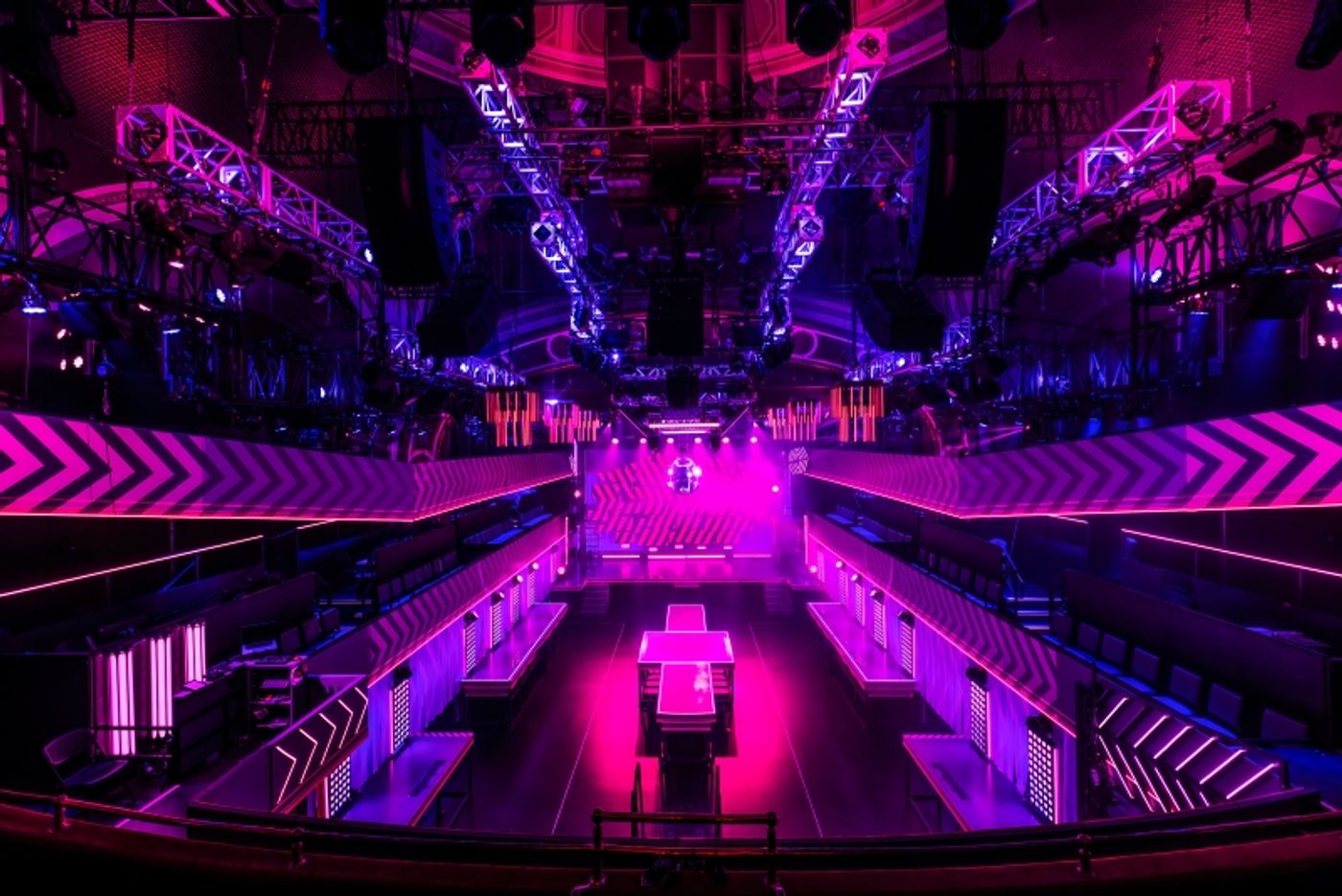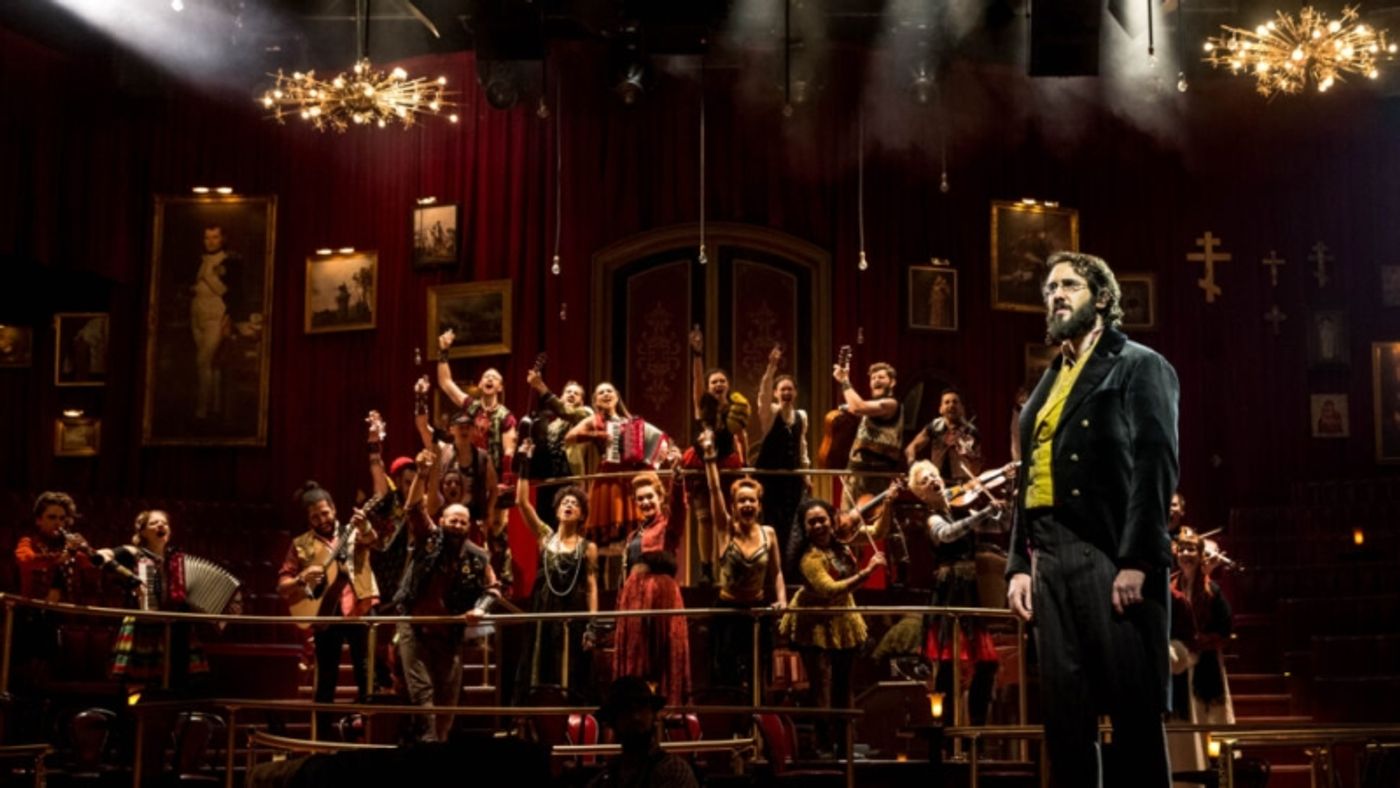Which Broadway Theatres Have Undergone the Most Dramatic Transformations?
Jennifer Ashley Tepper Is answering your questions with Broadway Deep Dive!
Do you have a burning Broadway question? Dying to know more about an obscure Broadway fact? Broadway historian and self-proclaimed theatre nerd Jennifer Ashley Tepper is here to help with her new series, Broadway Deep Dive. Every month, BroadwayWorld will be accepting questions from theatre fans like you. If you're lucky, your question might be selected as the topic of her next column!
Submit your Broadway question in the comments here!
This time, the reader question was: Which Broadway theatres have undergone the most dramatic transformations?
Wow, I love this reader question! One of my favorite questions I’ve received as part of BroadwayWorld’s Broadway Deep Dive column.
After seeing Here Lies Love at the Broadway Theatre recently, I guessed this question would be on a lot of theatergoers’ minds. Here Lies Love transforms the Broadway into an immersive dance club of a space, through the innovative vision of director Alex Timbers, scenic designer David Korins, projection designer Peter Nigrini, and the rest of their team. After experiencing the way that this production has intensely altered their space, one can’t help but wonder about the history of such things on Broadway.
To start, we currently have 41 operational Broadway theaters, and 4 of these opened as something else other than a Broadway house. It’s quite a significant transformation when a building that wasn’t a Broadway theater becomes one.
The Broadway Theatre, where Here Lies Love is playing, originally opened as a film house in 1924. Universal Pictures operated the theater originally called B.S. Moss’s Colony Theatre, on Broadway at 53rd Street. In addition to showing movie premieres, the Colony also hosted weekly lingerie fashion shows. In 1928, Disney’s Steamboat Willie made its New York premiere at the Colony. (In 1939, during another stint hosting film, Disney’s Fantasia would also premiere at the theater.) In 1930, the Broadway was transformed into a venue for live performance. Its first legit production was The New Yorkers, a new musical with score by Cole Porter and book by Herbert Fields. In order to become a Broadway house rather than a movie house, the space was thoroughly renovated.

The Broadway has received many significant renovations in the century since, most recently to make way for Here Lies Love. In fact, one of its earlier renovations was also to make way for a new immersive musical; In 1972, the now iconic flop musical Dude, a follow up to Hair by several of its creators, made the Broadway into an immersive playing field and also covered its stage in dirt. (When the dirt, kicked up by performers, accidentally got into audience members’ eyes, it was turned into mud instead.) Instead of selling seats in the orchestra, mezzanine, and so forth, the seating areas were called “foothills”, “valleys”, and other names pertaining to the natural world. The immersive setup was also used for the production to follow Dude into the Broadway, Hal Prince’s 1974 acclaimed revisal of Candide.
The Nederlander has a unique history. Prior to the building becoming a theater, the National, and opening in 1921, it spent at least a year as a large, multi-level carpenter’s shop, that also contained club rooms, showers, apartments, and a tennis court! When the space transformed into what we know as the Nederlander today, it had to erect a new fire escape to comply with fire safety rules for theaters, and that is why the Nederlander’s fire escape looks notably different than the rest of its structure to this day.
The Winter Garden originally opened in the 19th century as the American Horse Exchange! The spot we know today as the current home of Back to the Future, and the Broadway theater that has housed everything from the original productions of West Side Story and Mame to the long-running Cats and Mamma Mia! was once a center of the horse and buggy trade. In the late 1800s, the west 50s were filled with automobile dealerships as well as horse and buggy dealerships. The reason that the Winter Garden is so wide is because the land was once occupied by rows of horse stables! Even today, backstage, there are still several structures built into the walls that were originally put in place more than a century ago, in order for horses to be secured in place. For a time in the 1910s, the Winter Garden also had a runway spanning the orchestra section, so that performers such as Al Jolson could get even closer to the audience. When Rocky played the Winter Garden in 2014, and its boxing ring transformed the orchestra section of the audience during act two, the show was carrying on a legacy of performers getting up close with audience members in that area.
The Palace did originally open as a vaudeville house rather than a Broadway theater, but its most dramatic transformation is undoubtedly the one currently in progress. In 2018, the Palace Theatre ceased operations so that it could be lifted 30 feet off the ground, to make way for retail space and a new hotel structure. This looming new building has been in process for the past five years. A similar makeover having to do with a hotel happened from 1987 to 1991, when between La Cage Aux Folles and Will Rogers Follies, the Double Tree Hotel was built, connected to the Palace. When the Palace reopens, it will have a different entrance, on 47th Street rather than on Broadway, and its theater auditorium will be in a completely new air space!
Separate from initially opening as another kind of building entirely, many of our Broadway houses have undergone notable transformations, beyond regular renovations, since opening.
The Lunt-Fontanne started its life in 1911 as the Globe, and in the pre-air conditioning era, its rooftop opened up! Patrons had a view of the stars and a nice breeze when the roof was opened during the summer months. Renovations long ago closed up the Lunt-Fontanne’s retractable roof, but it’s still up there somewhere...
The Hayes Theatre on 44th Street is Broadway’s smallest house, with only 597 seats. But it was once even smaller! When the venue originally opened in 1912, it had a capacity of only 299. By today’s standards, that would mean the Hayes was not even eligible to be considered a Broadway theater, and would be classified as an off-Broadway house. In 1920, what was then known as the Little Theatre expanded its original layout to include a second level and a higher capacity.

Fast forward to the 2010s and another significant Hayes transformation took place. Second Stage purchased the theater and as part of that purchase, they also sold the alleyway between the Hayes and St. James to Jujamcyn, operators of the St. James. This former alleyway was transformed into additional stage space for the St. James, which previously had one of the smallest stage and wing footprints on Broadway, despite its large capacity. After many large musicals at the St. James fit their productions to the small stage space, Frozen had the distinction of being the first show with expanded space at the St. James, thanks to the Hayes.
In addition to this, Second Stage also renovated the Hayes in several other significant ways. For one, the theater’s dressing rooms had for years been some of the scrappiest on Broadway, located in the basement and comprised of one small room split up by dividers. This meant a lack of adequate dressing room space for many Hayes productions! This space was initially, in the early 20th century, a gorgeous lobby space complete with fireplace, but when the Hayes was used as a lecture hall, and then radio and TV studio, starting in the 1930s, its original dressing rooms on upper levels of the theater were converted into offices and the basement space sufficed for dressing rooms, a switch that was not fully rectified until the 2010s. Recently, the James Earl Jones Theatre (formerly the Cort) also underwent major renovation to add new space to its structure on 48th Street.

Alterations of Broadway houses for specific productions and otherwise are not limited to the theaters above. Most of our Broadway theaters have been around for a century, and have been renovated many times. Many Broadway shows have altered the auditorium of their respective theaters to welcome audience members into the world of their show. From Spring Awakening to Spelling Bee, from Great Comet to Cabaret, from Rocky Horror Show to Cats, production design has spilled into the seating area. Studio 54, which actually did open as a Broadway house originally, has undergone particularly massive transformations over the years.
The majority of our Broadway theaters are thankfully landmarked, to protect both their interiors and exteriors, which means that when productions transform the theaters, they almost always have to pay to transform them back for the next show!
Comments
Videos

